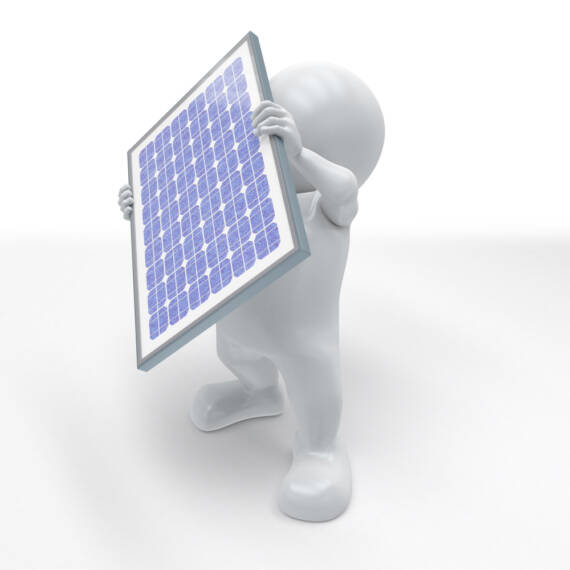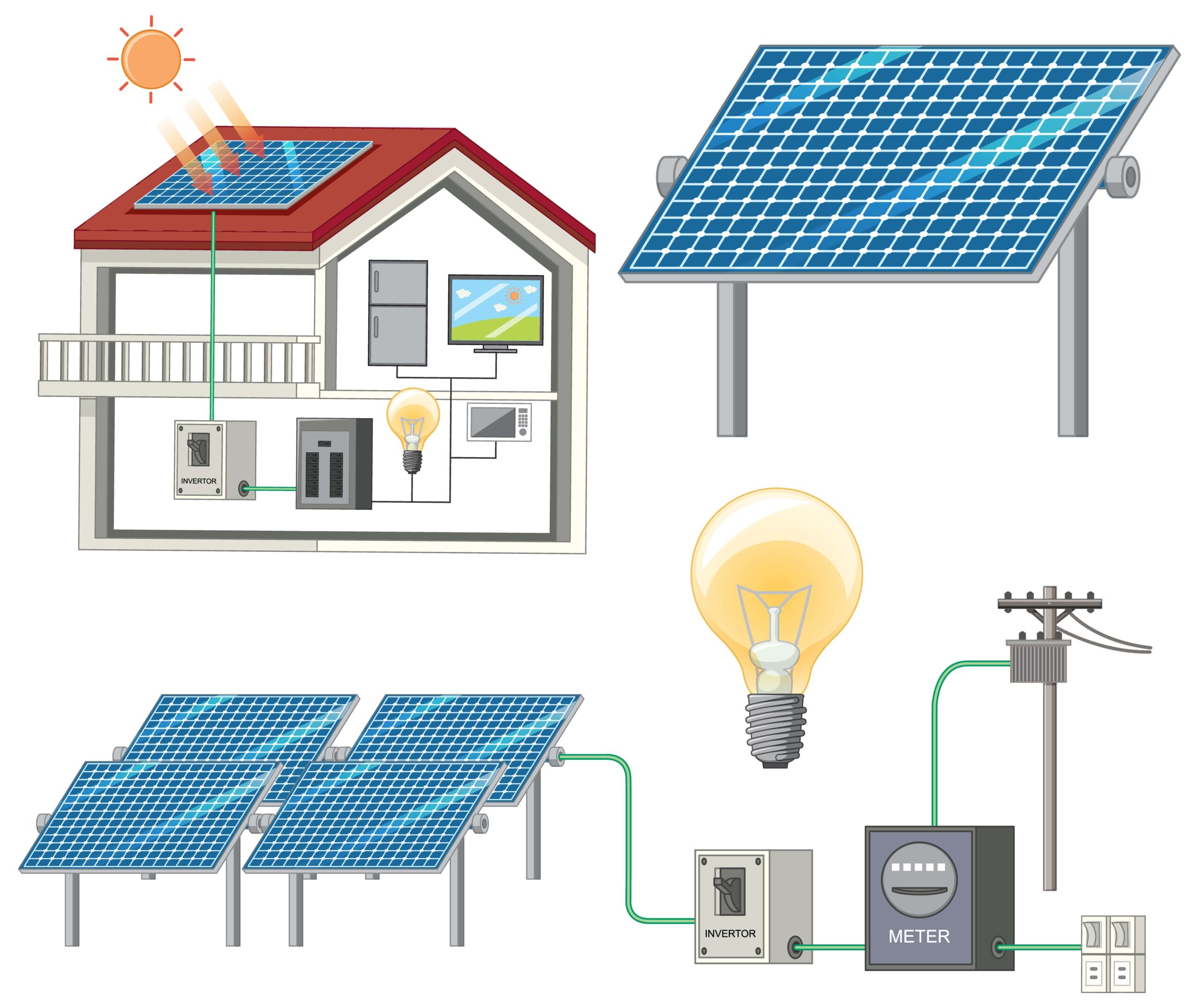What Direction and Angle Should Solar Panels Face in India?
Solar energy has emerged as a sustainable and eco-friendly alternative to traditional sources of electricity. With its abundant sunlight, India is an ideal location for harnessing solar power. However, to maximize the efficiency of solar panels, it is essential to determine the optimal direction and angle for their installation. In this blog, we will explore the best practices for solar panel angles in India, considering factors such as latitude, climate, and energy generation potential.
Factors that Contribute to the Suitability of a Roof for Solar Panel Installation.
- Orientation: A south-facing roof is generally considered ideal for maximizing solar energy production. East and west-facing roofs can also be suitable but may have slightly reduced efficiency.
- Tilt: A solar panel tilt angle allows for optimal sun exposure. The ideal tilt angle is often close to the latitude of the installation location, but adjustments can be made based on specific conditions.
- Size and Shape: A roof with ample available space is beneficial for accommodating a sufficient number of solar panels to meet energy needs. Flat or low-pitched roofs are generally easier to install solar panels on.
- Shading: A roof that is not heavily shaded by trees, nearby buildings, or other obstructions allows for maximum sunlight exposure throughout the day.
- Structural Integrity: The roof should be structurally sound and capable of supporting the weight of solar panels. A professional assessment is crucial to ensure the roof can handle the additional load.
- Age and Condition: While not a determining factor, the age and condition of the roof should be considered. If the roof requires repairs or replacement soon, it is advisable to address those issues before installing solar panels.
- Local Regulations: Compliance with local regulations and building codes is essential when installing solar panels. Familiarize yourself with any permits or approvals required in your area.

Ideal Direction for Solar Panels
In most regions, solar panel direction should face south to capture the maximum amount of sunlight. This orientation allows the panels to receive sunlight from morning to evening as the sun moves across the southern sky. South-facing panels ensure consistent exposure to sunlight throughout the day, optimizing energy generation.
However, in certain cases, adjustments to the ideal direction may be considered. For example:
In northern India, panels can face slightly toward the southeast to account for the sun’s lower position in the winter months.
In southern India, panels can face slightly towards the southwest to maximize exposure to the sun during summer months.
Optimal Solar panel direction in Different Regions of India
Region | Optimal Direction |
Northern India | South |
Western India | Slightly to the Southwest |
Southern India | South |
Eastern India | Slightly to the Southeast |
Central India | South |
Ideal Angle for Solar Panel
The optimal angle for solar panels, known as the tilt angle, depends on the latitude and geographical location of your area. It is widely accepted that solar panels generate maximum energy when their tilt angle is close to the value of the latitude.
Therefore, it is recommended for installers to position the solar panel system at the most suitable angle for optimal energy production.
To provide a reference for determining the best angle for solar panels, here is a table listing the latitudes of various Indian states:
| States | Latitudes |
| Jammu and Kashmir, Uttarakhand, Himachal Pradesh, Punjab | 30 – 36 degrees |
| Uttar Pradesh, Delhi, Bihar, Haryana, Rajasthan | 24 – 30 degrees |
| Madhya Pradesh, Gujarat, West Bengal, Jharkhand, Chhattisgarh, Maharashtra, Odisha | 18 – 24 degrees |
| Tamil Nadu, Andhra Pradesh, Karnataka, Kerala, Telangana | 12 – 18 degrees |
How Much Does Solar Panel Direction Impact Output?
The direction of solar panels has a significant impact on their output and overall energy generation. Proper panel orientation can maximize the amount of sunlight they receive, resulting in increased efficiency. Here’s a breakdown of the impact:
Direct Sunlight Exposure: Solar panels generate the most electricity when they receive direct sunlight perpendicular to their surface. When panels are oriented towards the sun, they can capture more sunlight, converting it into electrical energy more efficiently.
Energy Production Variations: Incorrect panel orientation can lead to suboptimal energy production. For instance, if panels face east or west instead of south, they receive sunlight for a shorter duration during the day, reducing their overall output.
Seasonal Differences: The angle of the sun changes throughout the year due to the Earth’s tilt and orbit. Adjusting the tilt angle of solar panels in accordance with the seasons allows for optimal energy production. By aligning panels properly, they can capture more sunlight during winter months when the sun is lower in the sky and adjust to maximize exposure during summer months when the sun is higher.
Output Variability: The impact of panel direction on output varies depending on factors like location, latitude, climate, and shading. In regions with abundant sunlight, the difference in output between optimal and suboptimal panel direction can be substantial.
Cumulative Effect: Over the lifespan of solar panels, the impact of proper panel orientation can accumulate, resulting in significant differences in overall energy production. Maximizing energy output through correct panel direction can enhance the return on investment and shorten the payback period for solar installations.
Conclusion
In India, optimizing the orientation of solar panels is vital to harness abundant sunlight and maximize energy generation. While facing south is generally recommended, slight adjustments can be made based on regional variations.
The optimal tilt angles depend on the latitude of the installation site. By considering these factors and employing suitable mounting systems, solar panel owners in India can ensure maximum efficiency and contribute to a greener and more sustainable future.
FAQs
Yes, the direction of the solar panel matters. t is generally recommended to face the panels towards the south for maximum energy production.
Yes, it is advantageous to adjust the angle of solar panels throughout the year to optimize energy generation, considering the changing position of the sun with the seasons.
The best angle for solar panels in India can be determined by considering the latitude of the location and aiming for an angle that maximizes sun exposure throughout the year.
Yes, solar panels can still generate electricity on cloudy days, although their efficiency may be reduced compared to sunny days due to decreased sunlight intensity.

Ileen Kaur (Author)
Ileen Kaur is an exceptional content writer, bringing her expertise and creativity to the digital realm. With a passion for storytelling and a knack for crafting compelling narratives, she has the power to captivate audiences and leave a lasting impression.


